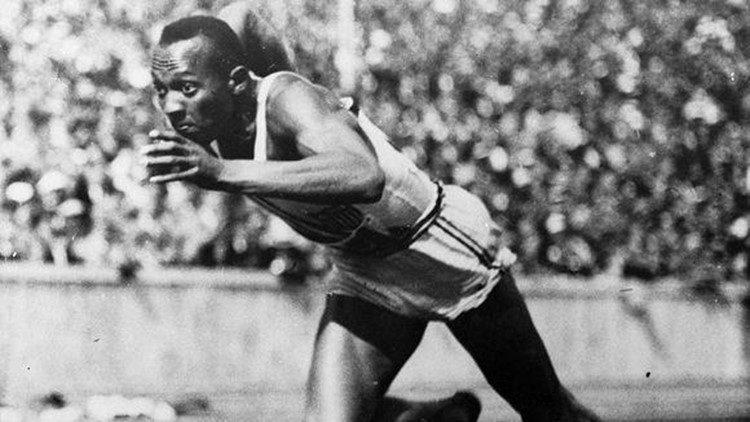One of the taglines for the biopic Race, about legendary American athlete Jesse Owens, is: "In 10.3 seconds Jesse Owens changed the world."
The "10.3 seconds" is the time it took Owens, played onscreen by Stephan James, to complete the 100-meter race at the 1936 Olympics in Berlin. (By the way: James could run the 100 in 12 seconds at the peak of his movie training.)
Yes, decades later, current fastest-man-alive Usain Bolt has that time beat.

According to sports science writer David Epstein, if Bolt and Owens raced together, Owens would still have had 14 feet to go after Bolt crossed the finish line in the 2013 World Championships, with a time of 9.77 (though, to be fair, Bolt ran the event even faster than that in the 2012 Olympics).
But wait... let's take a moment to appreciate how fast Owens was 80 years ago.
In Epstein's 2014 Ted Talk, he put Owens' race time into perspective.
"Consider that Usain Bolt started by propelling himself out of blocks down a specially fabricated carpet designed to allow him to travel as fast as humanly possible. Jesse Owens, on the other hand, ran on cinders, the ash from burnt wood, and that soft surface stole far more energy from his legs as he ran."
As Race shows on the big screen, Owens actually dug out holes in the dirt for his feet.
More from Epstein.
"Biomechanical analysis of the speed of Owens' joints shows that had been running on the same surface as Bolt, he wouldn't have been 14 feet behind, he would have been within one stride."
And it's impossible to account for technological advances afforded to Bolt, like time-keeping devices, upgraded running clothes and better sneakers.
So yeah, given the face that Usain Bolt is insanely speedy... Owens was also crazy-fast.
And, he was an American hero for many more reasons than his speed.

Top local headlines:
Follow us on Facebook for the latest breaking news updates
Get news, weather & traffic updates on the go with the KGW News app



